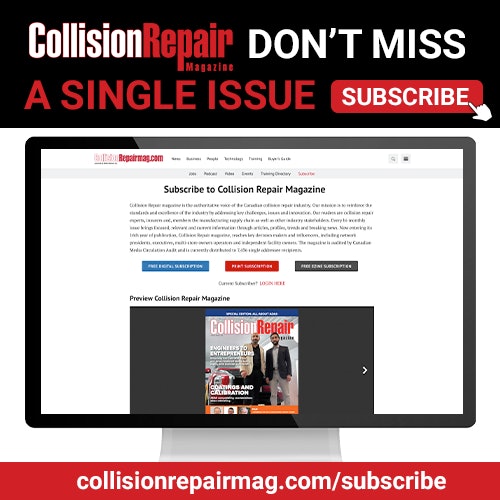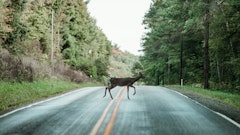
By Jeff Sanford
Toronto, Ontario — February 12, 2017 — Making news in the autonomous vehicle (AV) space this week is a report that Canada is “dead last” in the race towards driverless cars, a new algorithm that may allow AVs to merge seamless with human-controlled traffic, a discussion on how Israel is becoming a major player and much, much more!
– A new program in Ottawa will see truckers involved in a “traffic light tech pilot project.” According to a report in Ottawa Business Journal, the city’s traffic department announced this week it undertakes a connected-vehicle pilot project, “… funded by the provincial and federal governments … [that will] test whether giving truckers a heads-up on upcoming traffic-light changes might help them save fuel, thereby reducing emissions.” Greg Kent manager of traffic management for the city was quoted as saying, “This is an opportunity to see how our system performs in what is coming up in the future of transportation.” He went on to say that while technology of this type can be a “stepping-stone towards autonomous vehicles,” the focus right now is, “… on connecting traffic infrastructure to human drivers. For the project, the city plans to give one or more transportation companies access to equipment for five vehicles.” The connected intersections are expected to be ready in the fall with, “… Carleton University’s civil engineering school providing an assessment of the data in the New Year.”
– A major story in the National Post claims Canada is “dead last” in the race to create AVs. The story quotes a stat from the Boston Consulting Group that finds the AV space, “… could be worth US$77 billion by 2035.” The story quotes Barrie Kirk of the Canadian Automated Vehicles Centre of Excellence as saying that, “When I look at the G7 and the ways in which the G7 countries are getting ready for autonomous vehicles, Canada is dead last. There have been some really good things happening in Canada recently, both federally and within Ontario, but we still have a long, long way to go to catch up and to be competitive.” Kirk says the UK has put about $164 million CAD towards research, development and testing of autonomous vehicles in 2015. Michigan, meanwhile, just passed some of the most permissive self-driving laws in the world. So far Canada has the Ontario government’s automated vehicle pilot project, which launched in January 2016. The project is the only one of its kind in the country. It allows, “… companies and researchers to test self-driving technology on public roads as long as they receive a permit and always have someone in the driver’s seat ready to take over if something goes wrong. This fact is contrasted with Michigan’s more liberal laws … those laws … allow companies to test autonomous cars without a driver or even a steering wheel,” according to the report.
The National Highway Traffic Safety Association (NHTSA) in the US is also taking a “light touch” approach in terms of regulations around testing of AVs. This looseness is a benefit south of the border, according to the National Post.
The report goes on to note that there are 376 companies doing auto research and development in Michigan. Google and Uber are both opening self-driving research centres in the Detroit area. “Even State Farm Mutual Automobile Insurance Co. is getting involved by funding research at the University of Michigan’s Mobility Transformation Center to better understand the risks and liabilities of driverless cars,” according to the story. “Ontario, meanwhile, has so far attracted a total of just three participants to its year-old self-driving pilot project: The University of Waterloo, BlackBerry QNX and German motor-home manufacturer Erwin Hymer Group.” General Motors of Canada Ltd., not part of the pilot project, said last year that it will hire up to 750 engineers to support the development of autonomous and connected vehicle technology in the province.
The reporter also talked to John Wall, head of BlackBerry QNX, who said that Canada is at an inherent disadvantage compared to its other G7 counterparts because it doesn’t have any homegrown automakers. “If you look at the G7, we’re the only ones that don’t make a car, that don’t actually design and manufacture and build a car. There’s more incentive in (other G7) countries, because there are actually automotive companies,” Wall was quoted a saying.
– A UK newspaper reports that the, “… arrival of self-driving cars will see motorists required to take out dual insurance policies.” The story goes on to say that the Department for Transport will, “… unveil plans for new, two-in-one insurance products for automated vehicles, which cover both the motorist when they are driving and the car when it is in driver-less mode … Under the plans self-driving vehicles will allow drivers to hand full control and responsibility to the car as soon as ‘driver-less mode’ is turned on … Claims made against cars which crash while in driver-less mode will be paid out by insurance companies who will then recover costs from the party responsible for the incident, which may be the manufacturer.” According to the writer, “… the dual policies would give innocent victims involved in a collision with an automated vehicle quick and easy access to compensation.”
– A new algorithm developed by a team of Swiss researchers will allow, “… autonomous cars to merge with human traffic on highways with the flexibility of a school of fish.” According to researchers from the Distributed Intelligent Systems and Algorithms Laboratory at the Ecole Polytechnique Federale de Lausanne (EPFL) in Switzerland the new algorithm, “… is a major step forward for autonomous car algorithms, which have primarily turned autonomous cars into blocky platoons along highways. The algorithm allows for a connected network of different kinds and numbers of autonomous vehicles driving on multiple lanes, that can incorporate human-driven vehicles. The lab focuses on developing optimized systems for intelligent, distributed networks, and worked with Autonet 2030, an EU funding program to gradually incorporate autonomous vehicles into popular use.” The new algorithm has cars moving as a unit and communicating using vehicle to vehicle (V2V) positioning technology, “… to flow around each other for optimal spacing and speed.” This allows the convoy to act as a group like a school of fish does. “Each vehicle is positioning itself, so when one exits or enters the highway, the algorithm enables the entire convoy to move to change its spacing to accommodate [the others],” according to the report.
– An article in an Israeli newspaper notes that the country’s expertise in, “… information technology and cyber security is making it a major player,” in the emerging AV world. The story in The Jerusalem Post notes that Israeli Prime Minister Benjamin Netanyahu recently met with the governor of Michigan, Rick Snyder. According to Netanyahu, “Israel has some 500 start-ups dealing with this new industry.” The country has a strong IT sector in areas like imaging and sensor control and some of the world’s most advanced missile systems, which are all about sensor imaging and positioning. According to the story the, “… military gives Israel an advantage in IT and cyber security,” with many start-ups having been developed by veterans of military intelligence and national security units. Israeli companies are also particularly competent when it comes to cyber security, which Snyder said is, “essential when discussing intelligent cars.” Snyder was quoted as saying, “Even today, cars can be hacked,” and went on to say cyber security will become, “… even more of a problem when cars are self-driven. The more and more ‘intelligent’ the cars become, he said, the more they will rely on information technology and the more they will become hackable.”
– A report on Business Insider says the auto industry is currently grappling with a key issue: Whether or not to “share data and ideas” generated by connected cars among all industry players. The OEMs want to introduce autonomous vehicles and get to market fast to “establish themselves as leaders.” The fastest way to do that is through sharing data and using data shared from others. But sharing data also helps the competition, and so auto companies are debating whether to follow the open/sharing path, or keep all data within the company. The story goes on to say that as “autonomous development continues,” the tension between collective versus private data will only “heighten” and more companies will, “… be forced to decide between advancement through sharing and potential slowdowns in research, but gains relative to competitors through hoarding data.”
– A Senior Director of Engineering at Google has been hired by ride-sharing company Lyft to lead the company’s maps and marketplace division according to a report. Several Google Maps engineers have migrated to the ride-sharing industry, “… where many companies are staffing up their mapping divisions in the interest of making the art of connecting rider and driver as precise as possible.” The latest engineer, “… helped pioneer Google Maps’ wildly popular Street View, which provides panoramic views of many of the world’s roads.” At Lyft the engineer will help develop the company’s “… dispatch, pick-up and drop-off procedures with an eye toward getting people where they need to go more precisely.” Lyft’s President has said that a majority of its rides will be in self-driving cars by 2021.
– Flying cars could be buzzing around by the end of the year according to an article on Business Insider. The writer quotes Zach Lovering, CEO of flying car company, Vahana. He predicts that by the end of this year the company will have performed its first test. The company’s product is preparing to take flight in a matter of months. “I can call my self-flying taxi via any app like a taxi. Once you fasten your seatbelts, it will set the destination and you will start to take off,” said the CEO.






















